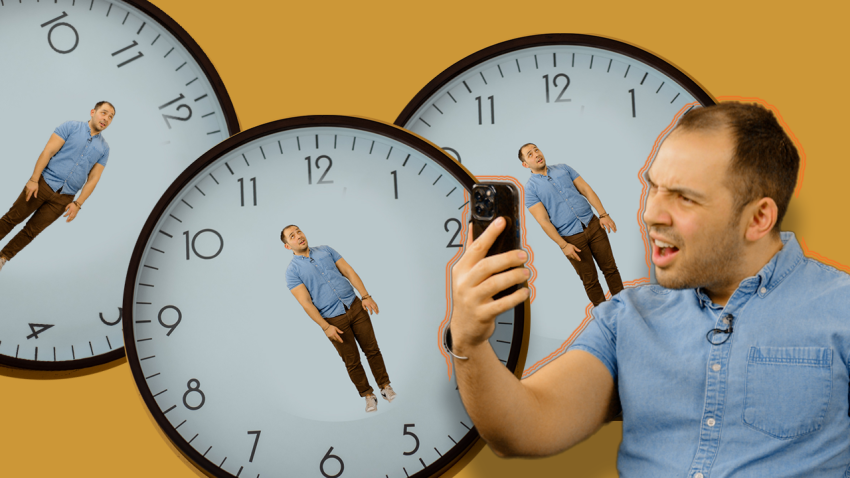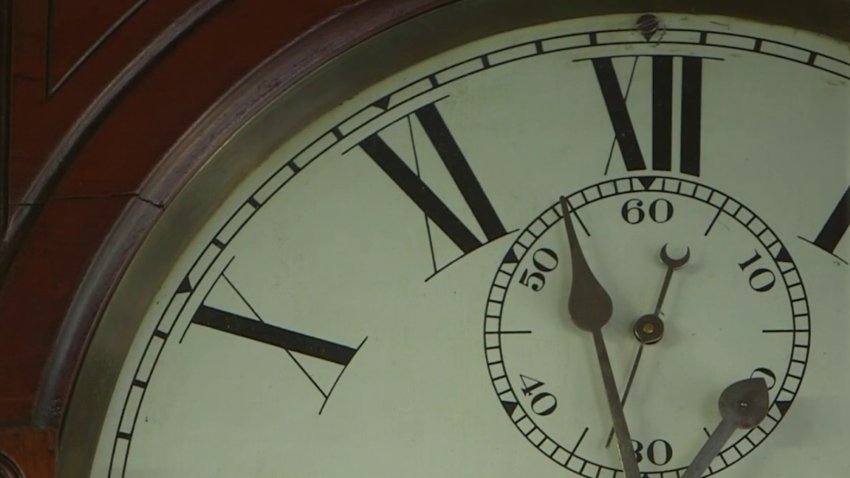Every spring we set our clocks forward an hour, and every fall we set them back, but why? Learn the real story behind Daylight Saving Time.
No one can deny San Diegans love sunlight. With the darker winter months of the year behind us, San Diegans can thank March's daylight saving time (and the earth's position as it revolves around the sun) for a whole other hour of those sweet, sweet solar rays.
Daylight saving time has Americans in every state except for Hawaii and Arizona moving their clocks an hour forward on Sunday, March 9 at 2 a.m. At that point, time will automatically move ahead to 3 a.m. Time travel!
Relevant content:
The hours of daylight have been steadily growing since the Winter Solstice (the first day of winter). Thus, the evening of March 9 will come with a later sunset, and sunrise and sunset times will be about one hour later than the day before, according to the Old Farmer's Almanac.
Get top local stories in San Diego delivered to you every morning. Sign up for NBC San Diego's News Headlines newsletter.
The sun will rise at 7:06 a.m. on the morning of March 9, whereas the sun will rise at 6:07 a.m. on March 8, according to the National Oceanic and Atmospheric Administration. On that first evening of DST, the sun will set at 6:52 p.m.
By the time summer truly sets in on June 20 (first official day of summer), sunset time in San Diego will stretch all the way to 8 p.m.!
On July 9, sunset time will revert to 7:59 p.m. and grow steadily earlier as the daylight saving time period recedes, according to NOAA.
If you prefer more daylight, try to get as much as of it as you can before Nov. 2, when the clocks "fall back" again.
The daylight saving time debate
The debate over daylight saving time persists as experts question its relevance. Supporters argue it reduces electricity use, boosts retail and outdoor activities, and improves traffic safety.
Critics, however, say DST disrupts sleep, increasing health risks like heart attacks and strokes, while modern energy use has minimized its savings. Businesses and farmers also find the time change disruptive.

Is President Donald Trump getting rid of daylight saving time?
President Donald Trump, president-elect at the time, wrote in a December 2024 post on TruthSocial that his Republican party was planning to "use its best efforts to eliminate Daylight Saving Time, which has a small but strong constituency, but shouldn’t! Daylight Saving Time is inconvenient, and very costly to our Nation."
But Trump softened those comments Thursday when asked about the upcoming switch to daylight saving time.
“It’s a 50-50 issue. When something’s a 50-50 issue, it’s hard to get excited about it,” he said. “I assume people would like to have more light later, but some people want to have more light earlier because they don’t want to take their kids to school in the dark.”
Didn't Californians vote to remove daylight saving time in 2020?
Yes, Californians did. So why are we still changing our clocks then?
San Diego denizens might remember voting on California's Proposition 7 in 2018.
That proposition passed by nearly 60% of the vote, giving the California Legislature the ability to change daylight saving time, according to Ballotpedia.
Proposition 7 didn't actually change daylight saving time, it just gave the California State Legislature the ability to actually change it, IF they earn a two-thirds majority vote on it (from both the California State Assembly and California State Senate) and then IF the federal government already allows it.
However — states are allowed to make standard time year-round.
That's what Republican Sen. Roger Niello intends to do. In December, he introduced SB-51, which would "express the intent of the Legislature to enact legislation that would relate to the implementation of permanent standard time."
Would removing the time change do anything?
Maybe. Maybe not! In the mid-70s, the U.S. had year-round daylight saving time, but that quickly became unpopular and was reversed.
Regardless of time change laws, the earth is still tilted on its axis at an average of 23.5 degrees, according to NOAA. That tilt is responsible for seasonal changes and thus the amount of sunlight you get where you live. Your location on the earth also affects how much sunlight you'll get in a year. Generally, the closer you are to the equator, the more sunlight you'll get throughout the year, NOAA says.
If you REALLY don't like DST, it might be worth considering moving close to the equator, where seasonal changes have little effect on the length of daylight, according to NOAA.
Can my state opt out of daylight saving time?
States are actually allowed to opt out of DST and remain in standard time year-round (as Hawaii and Arizona have done). But, they are not allowed to establish DST year-round, according to the Old Farmer's Almanac.

Where did daylight saving time come from?
Close to the end of World War I, President Woodrow Wilson signed the Standard Time Act into law, putting daylight saving time into effect for the first time in the U.S. in March of 1918, according to the Library of Congress. The move was intended to save energy costs during WWI.
About one year later, the law was repealed due to the war's end, according to NBC Bay Area.
In World War II, President Franklin Roosevelt instituted a year-round daylight saying time in February 1942 he called "war time." That DST lasted until Sept. 30, 1945.
When the Uniform Time Act was passed in 1966, standard time was mandated across the country within established time zones. However, states could still opt out.
When the 1973 oil embargo hit, America needed to conserve energy. Thus, President Richard Nixon signed year-round DST (the Emergency Daylight Saving Time Energy Conservation Act) into law, hoping to ease the national gas crisis.
Congress enacted a trial period of all-year DST from January 1974 to April 1975.
The time change was unpopular. Eight Florida children died in traffic accidents that were linked to the time change, according to NBC News.
Permanent daylight saving time was reversed in October 1974 by President Gerald Ford.
The Associated Press contributed to this story.




